St. John, NB to Hopewell Cape, NB
126 miles/202 Km
10 July 2007
Photo Gallery and Commentary
We left Harding Point Campground under overcast skies. It seems that most of the time we have been in the
There was one very funny moment I had meant to write about on Sunday. When we left
Our drive to
The eastern end of the
As you walk on the ocean floor, you can see the effects of the tide difference on the rocks. This area has limestone and conglomerate rocks. Conglomerate looks like concrete with relatively large rocks (aggragate). The action of the water has dissolved the limestone, which cause some of the conglomerate to collapse and create caves, arches and the rock features called flower pots. We plan to be back at Hopewell Rocks tomorrow morning to photograph the rocks at high tide.
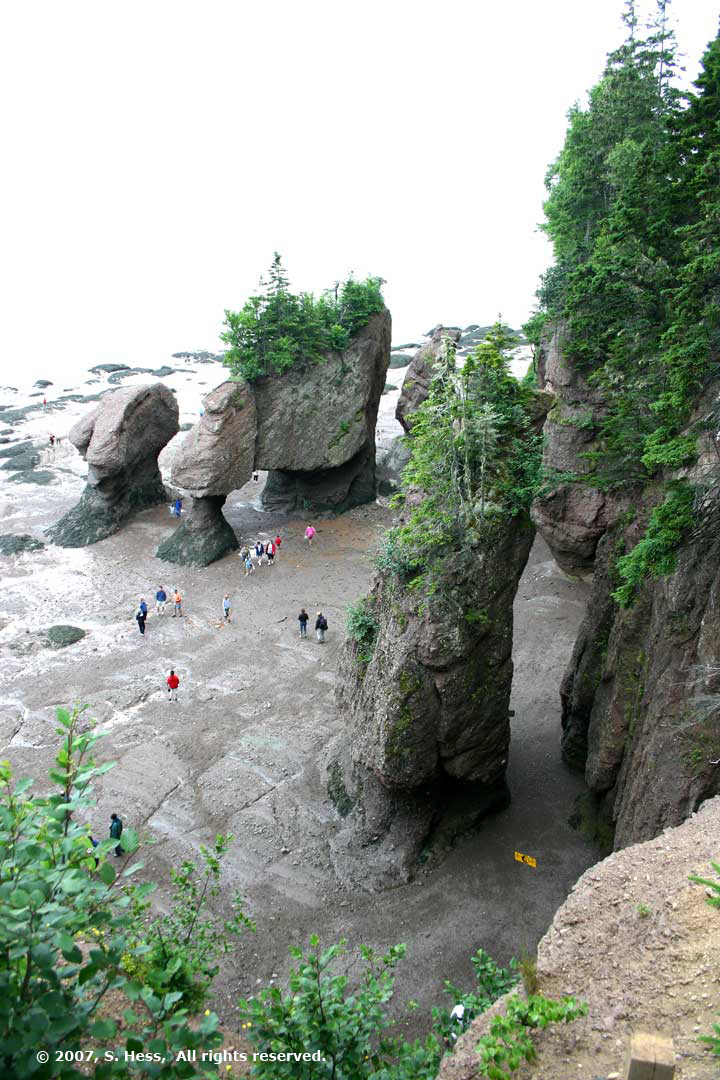
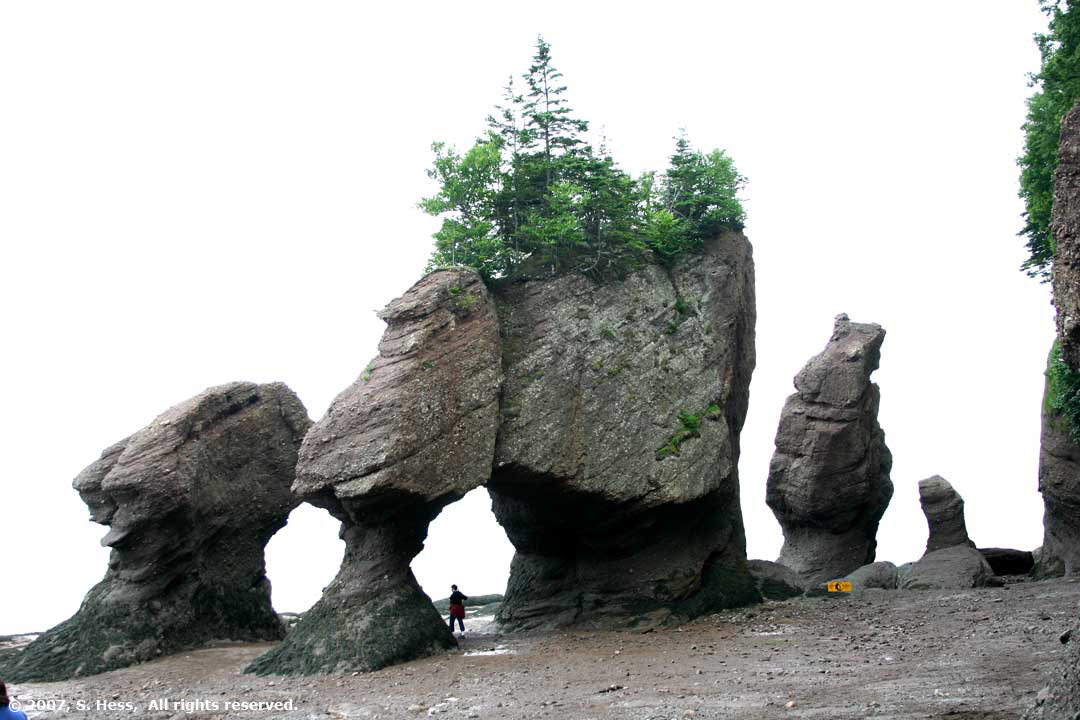
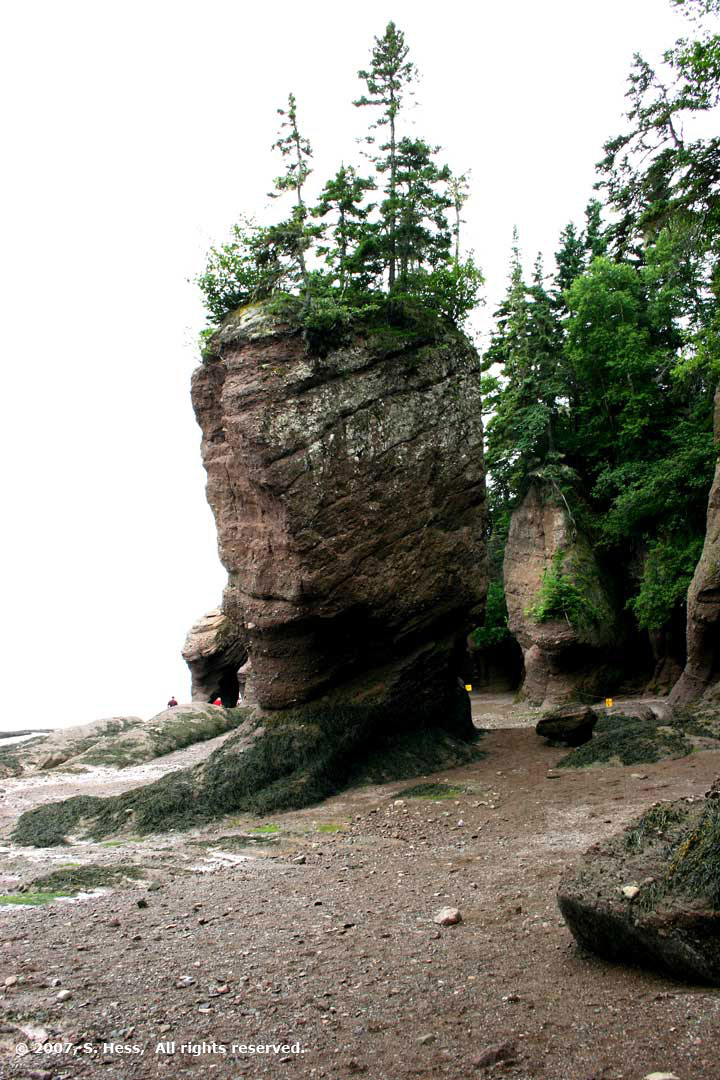
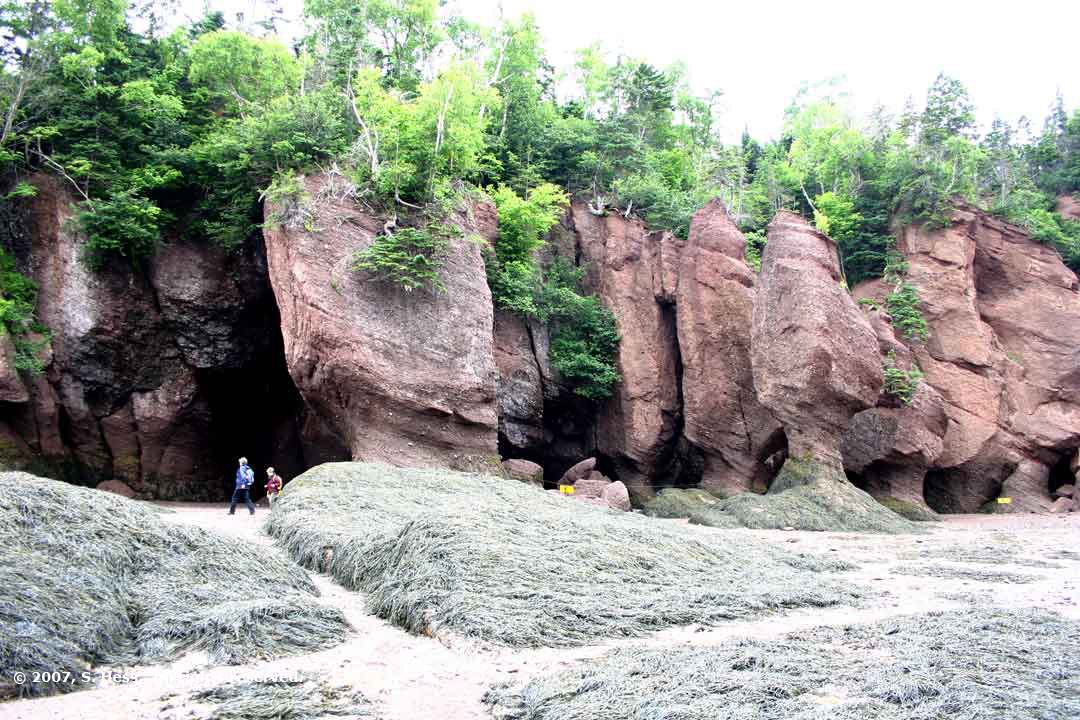
Some examples of the "Flower Pot" formations found at Hopewell Rocks. The picture in the upper left was taken from above the rocks.
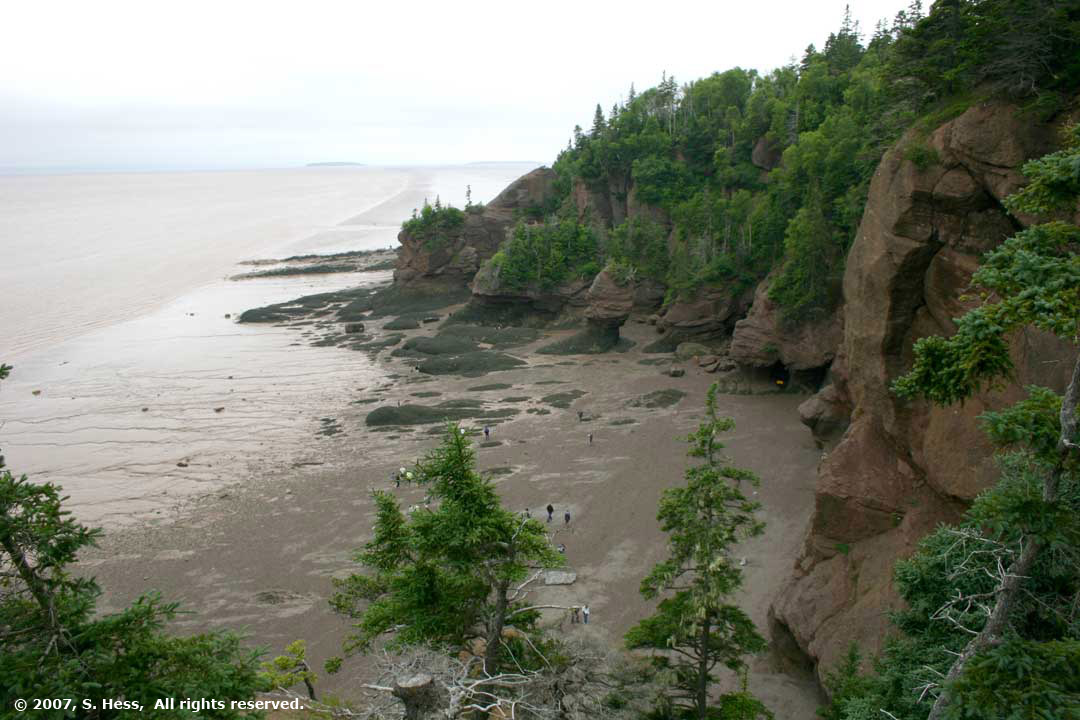
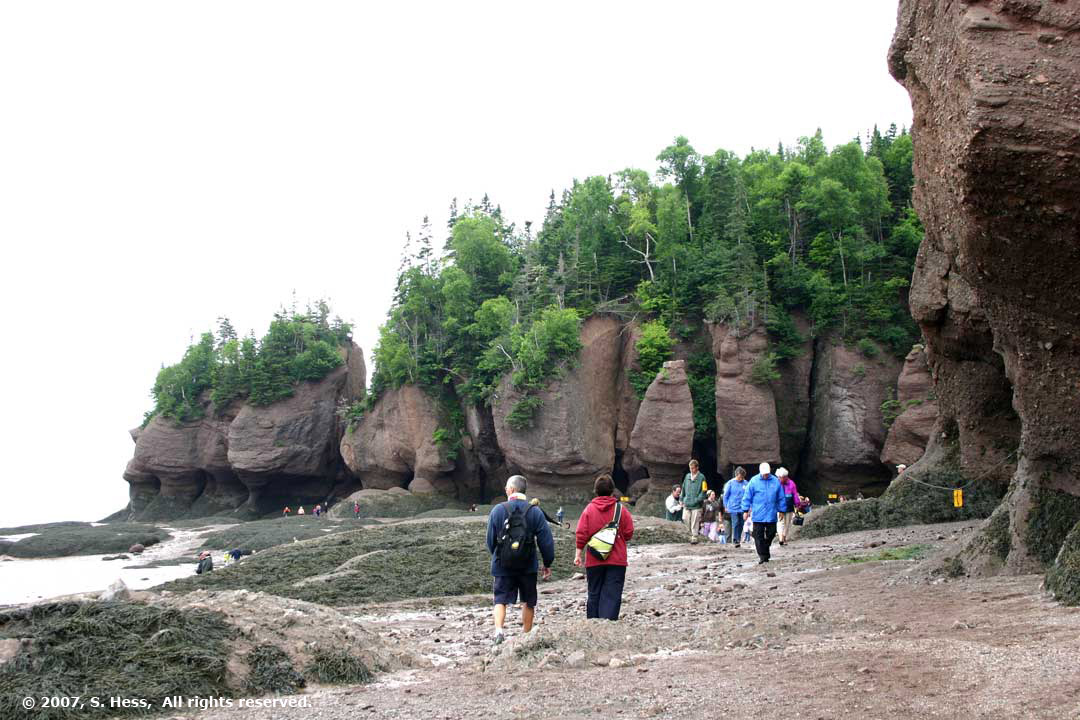
Big Cove from above, left, and at ocean floor level, right
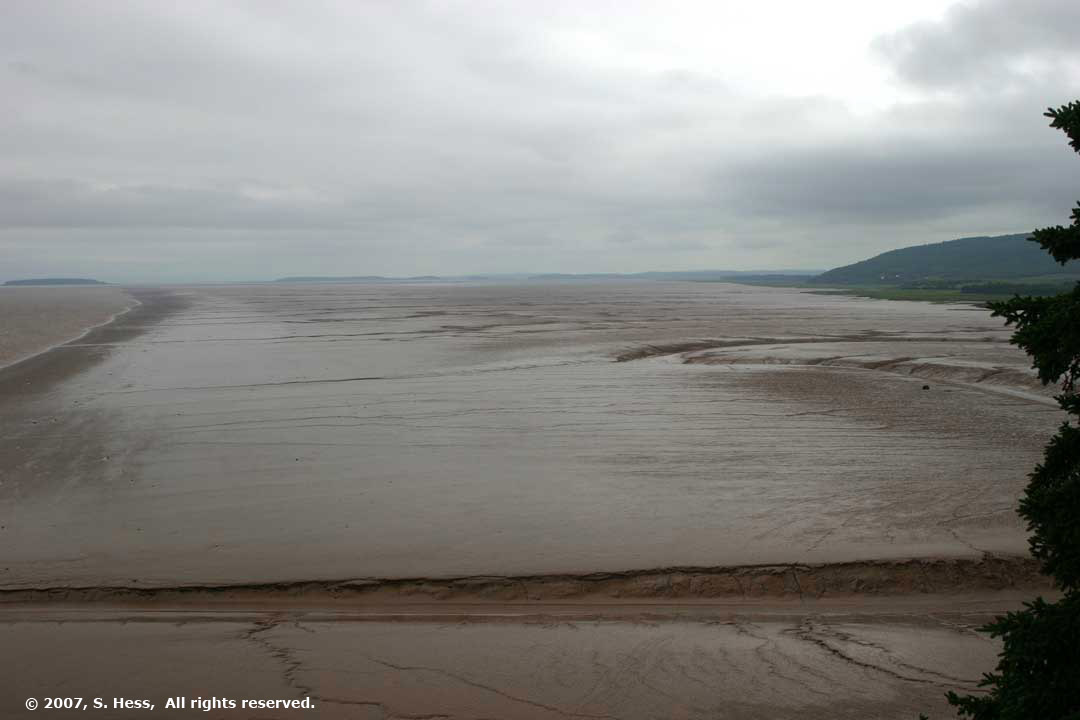
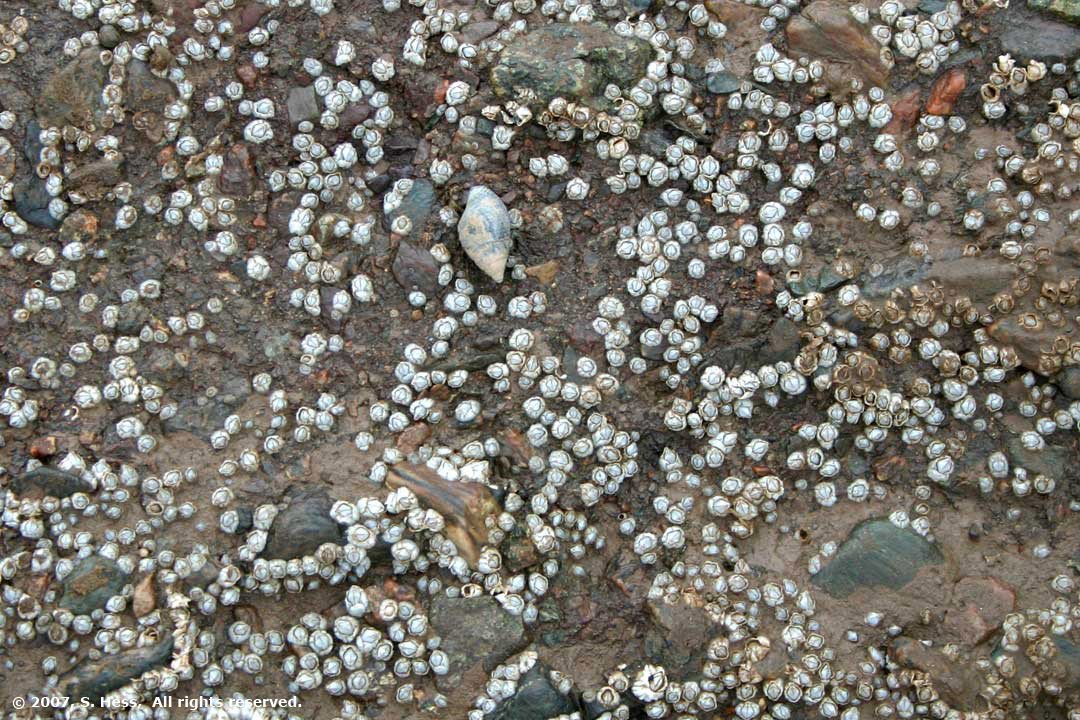
Mud flats at low tide. The shore is quite a distance from the low tide line.
Barncles and snails await the return of the water as the tide comes in
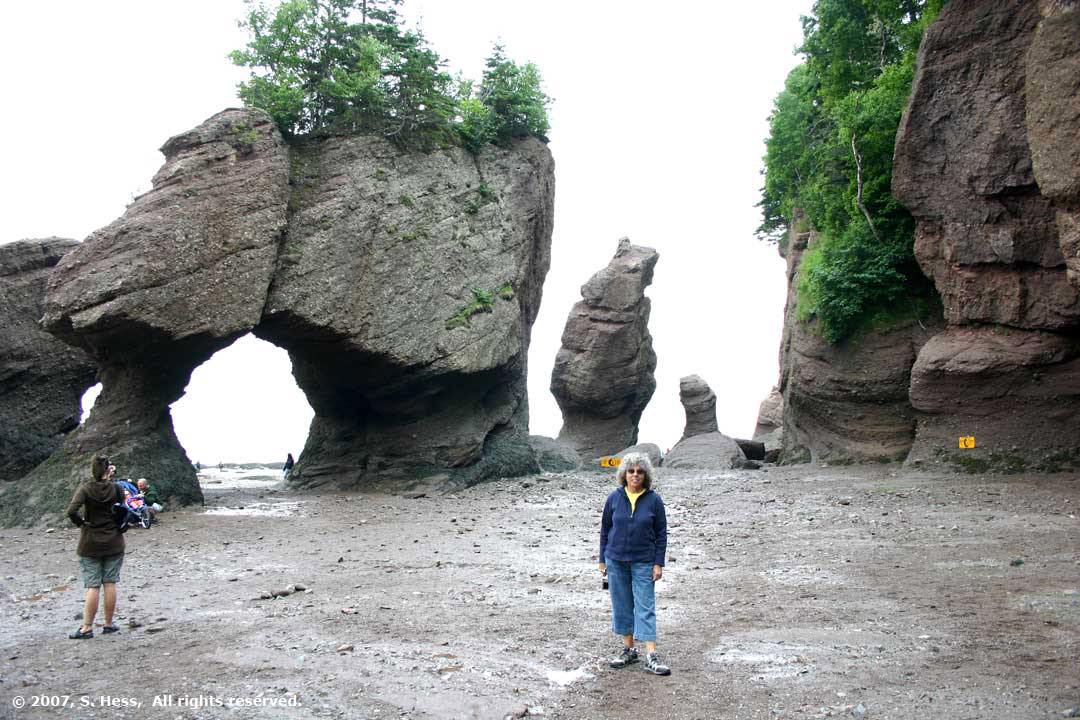
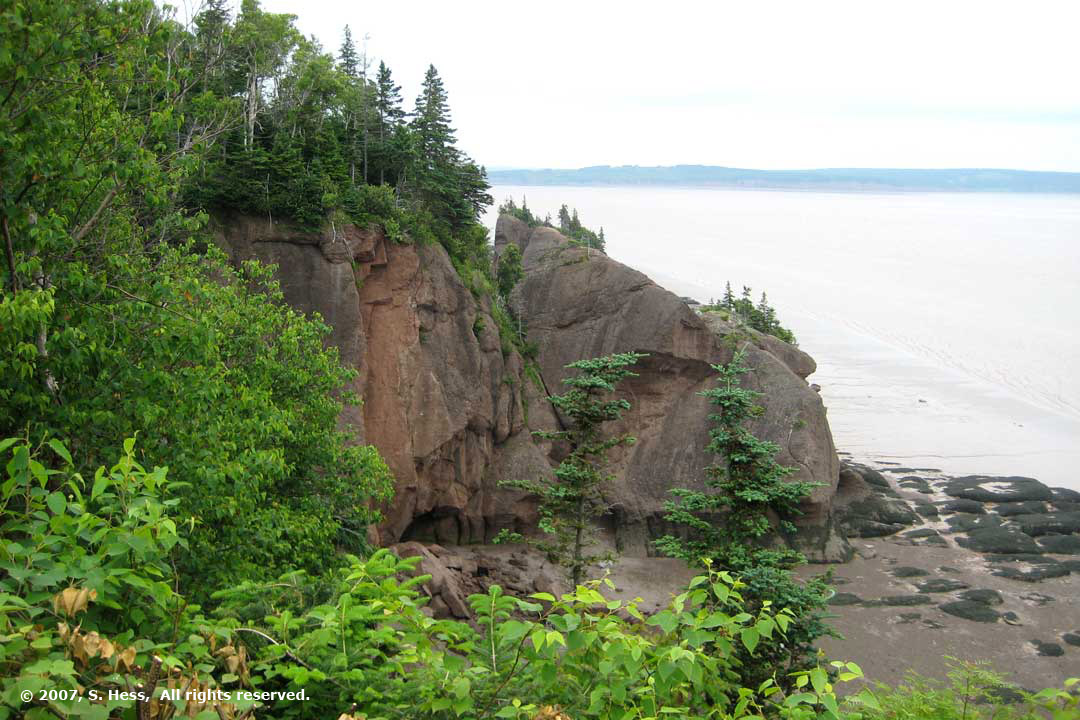
Susie on the ocean floor
Susie's view of Hopewell Rocks. Nova Scotia is in the distance.

Sam on the rocks